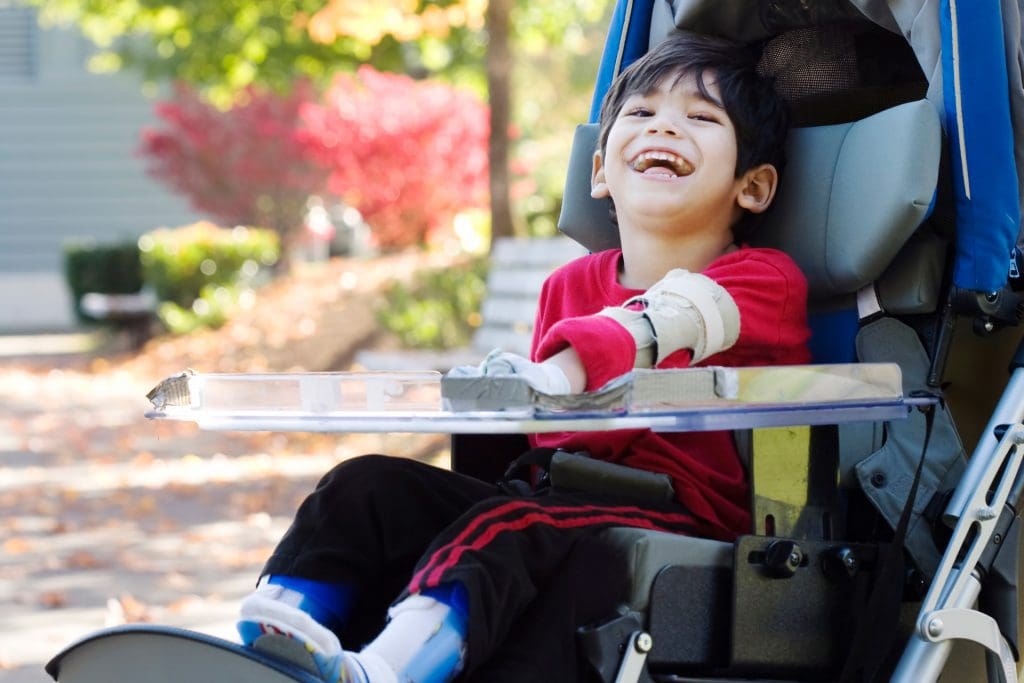If you have a child that requires the aid of a mobility device such as a wheelchair or orthotics, you may already know about the importance of correct fitting.
In fact, children who haven’t been properly fitted to their wheelchair or orthotics run the risk of developing serious complications, such as:
- Skin breakdown and wounds
- Joint misalignment, due to the shortening of the muscles and ligaments associated with posture
- Shoulder, back, and hand injuries
At Little Feet Therapy, our pediatric physical therapists and pediatric occupational therapists can help ensure a proper wheelchair or orthotic fit for your child.
Keep reading to learn more about how physical therapy and occupational therapy can help with wheelchair and orthotics fitting.
How Does Wheelchair Fitting Work?
Since most insurance companies will only pay for a new wheelchair every 5 years, it is important to get the fitting right the first time.
Therefore, the wheelchair fitting processing includes three steps to ensure accuracy.
First, a pediatric occupational or physical therapist will meet with you and your child to take measurements and write a report explaining which wheelchair features your child requires.
Next, the wheelchair supplier or durable medical equipment dealer will meet with you and your therapist to discuss options and pricing. They will also reach out to your pediatrician for an order to submit to insurance. They will then supply you with a wheelchair that your child can operate, can fit through the doorways of your house, and fits your child’s needs.
Different Wheelchair Components To Consider
Modern day wheelchairs have come a long way from the “one size fits all” wheelchairs of the past.
In fact, there are multiple components that must be taken into consideration when purchasing a wheelchair for your child.
For example, the wheelchair seat must be properly fitted to ensure proper width and depth.
The seat on your child’s wheelchair must be wide enough to comfortable accommodate their hips, but snug enough to provide proper support.
On the other hand, the depth of the seat must be long enough to support your child’s thighs, but short enough to prevent the seat from rubbing against the back of their legs.
The back of your child’s wheelchair also needs to be accurately fitted to ensure proper support.
The back height must be tall enough to support your child while they are sitting, but low enough to allow as much mobility as possible.
Finally, the wheelchair wheels and tires need to be carefully selected to accommodate your child’s unique needs. Modern day wheelchairs have two sets of wheels: a small front set called “casters”, and a larger back pair called “drive wheels”.
There are many types of wheels and tires that offer a wide range of benefits and drawbacks. For instance, wheels or tires that are made of pneumatic materials provide excellent shock absorption, which makes for a softer ride.However, they require regular maintenance to make sure that the valves do not lose their air.
On the other hand, solid tires are maintenance free and durable.However, they provide a bumpier ride.
A pediatric physical or occupational therapist will take all these components into consideration to ensure the right wheelchair fit for your child.
What Do Orthotics Do?
Orthotics provide leg or foot support to help support children struggling with certain mobility issues.
Orthotics can offer numerous benefits to your child’s health, include:
- Increased mobility
- Improved joint alignment
- Correction of atypical walking patterns, such as toe walking
- Protection and support of your child’s bones and muscles
Orthotics may be as simple as shoe inserts or made custom to support your child’s unique needs and provide support only where needed.
Orthotics can make it easier for your child to achieve their physical and occupational therapy goals while simultaneously help them experience as much movement as possible.
What Conditions Can Orthotics Help With?
Orthotics can help children of any age, from infancy all the way to young adulthood.
Orthotics can help treat a wide range of chronic conditions and motor impairments, including:
- Cerebral palsy
- Hypotonia
- Autism Spectrum Disorder
- Muscular dystrophy
- Down syndrome
- Certain neuromuscular disorders, such as traumatic brain injury (TBI)
Orthotics may also be used for non chronic issues, such as:
- Athletics
- Toe walking
- Ankle instability
- Issues with ankle range of motion
How Does Orthotics Fitting For Children Work?
Before your child can be fitted for orthotics, a physical therapist will conduct an evaluation in order to assess your child’s walking patterns and foot positioning.
During the evaluation, your child’s therapist will recommend the best orthotic to support your child’s specific needs.
Once the specific orthotic is selected, your child will be casted to customize the orthotic.
Finally, you and your child will attend a fitting appointment where a physical therapist will:
- Teach you and your child how to put on, take off, wear, and clean their orthotic
- Teach the importance for wearing the orthotic
- Provide tips for maximizing your child’s comfort while wearing the orthotic
- Recommend proper footwear
Regardless of your child’s specific mobility needs, we can help.
At Little Feet Therapy, our qualified physical and occupational therapists have a special interest in helping children experiencing mobility issues reach the fullest potential.
Don’t wait to ensure a proper wheelchair or orthotic fit for your child.
Book your appointment with Little Feet Therapy today to get started.
